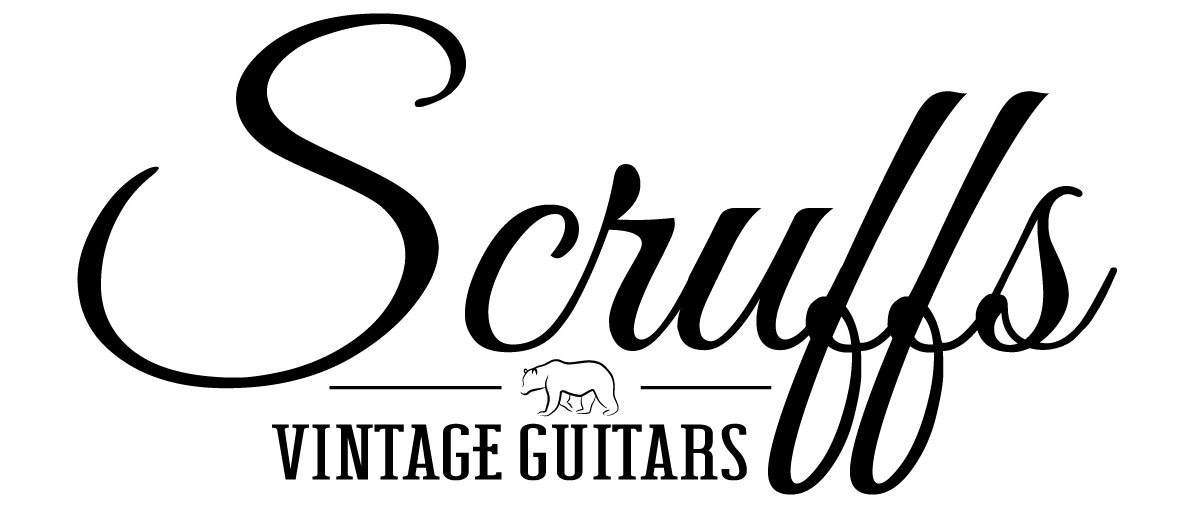The Innovators
Clarence Leonidas Fender (“Leo”), was born August 10th, 1909 in Anaheim, California. His interest in music began at an early age. He learned to play the piano and then began playing the saxophone. However, the saxophone did not hold Leo’s attention for long. He quickly became fascinated with radios; tinkering with parts and pieces his uncle would give him from his automotive-electric shop. Because Leo lost his eye to cancer at the age of 8, this left him ineligible to join the World War II fight. Instead, he decided to go to obtain higher education. Leo studied accounting at Fullerton Junior College, he took several accounting jobs and due to the economic state of the country, he was let go. After losing his job, he began a radio repair shop on a $600 loan.
Clayton Orr “Doc” Kauffman, born May 4th, 1901, was a violinist, saxophonist, and instrument repairman. He made a living as a dance band musician. With radios becoming a popular home appliance, Kauffman started to provide at-home radio repairs. He received a call for a repair job but there was a mistake with the address. When he arrived at the job site, Kauffman unknowingly walked into a home needing a doctor for a baby delivery; not a radio repair! Word quickly spread about the blunder and Kauffman quickly adopted the new nickname, Doc. During the 1930’s, Doc was working as chief electric guitar designer for Rickenbacker. He filed his patent for a ‘pitch-changing device’ for tenor guitars on August 19th, 1929. In 1937, he convinced Rickenbacker to manufacture a Vibrola electric guitar; however, the invention was never economically successful.
Joining Forces
Some might say that it was fate, but in the 1940’s Doc walked into Leo’s repair shop. The two quickly struck a friendship. In conversation, Doc mentioned that he was in possession of the Rickenbacker string winder. Leo’s perked up because this would allow him to produce his own strings. Leo offered Doc a job almost instantly. It is believed that if this partnership was not formed, Leo would not have made the transition into instruments, especially guitars. Together, they started K&F Manufacturing.

K&F Manufacturing
Doc and Leo got to work and created the Radio Shop guitar in 1944. It is important to note that the pickup design was a big step that would lead to the modern pickup. The Radio Shop guitar had a direct string pickup design. The strings were suspended through the pickup allowing the string vibration to be amplified instead of the bridge or body vibrations. They applied for a patent on September 26, 1944. Although they had the fundamental idea for an electric guitar, the radio shop guitar was never put into production.
In the early months of 1945, they began making lap steel guitars and amplifiers and by 1946, they were in full production. They had three models: Deluxe, Standard, and Student. These lap steel guitars were equipped with the string through pickup design. Their lap steels gained traction within the area and they had to purchase larger amounts of parts from Radio and Television Equipment, owned by F.C. Hall.
F.C. Hall was one of the first businessmen to envision the economic potential of electrically amplified music. On March 1st, 1946, Leo signed a contract providing Radio-Tel with exclusive distribution and in return, Radio-Tel would provide financing and marketing. Radio-Tel employee Don Randall was a sales guru and general manager. He was the one that worked to fulfill Radio-Tel’s guaranteed 5,000 guitar and amplifier sales volume.

Major Changes - Fender Electric Instruments
In the Spring of 1946, Doc quit his job with Leo, but they maintained a close friendship. By the summertime, Leo was ready to establish his name in the world. By this time he had two buildings and a full factory named the Fender Manufacturing Company. During this time, business was slow and Radio-Tel was not meeting its sales quota. Fender was getting irritated and found himself in a difficult financial position. Fender blamed Don Randall for the slow sales, but little did he know that Randall was pushing to set up nationwide distribution. Reluctantly, Leo took a $14,000 mortgage loan from K.C. Hall on the factory property. During this time, the factory experienced many interruptions and were forced to lay off most of the workers. Dale Hyatt managed the Radio shop and was Leo’s sidekick in the efforts to maintain production.
The future was not looking bright for Leo and his company; but he was determined. Continuing to produce lap steels and amplifiers, things began to turn around.
Stay tuned for our next blog post where we will explore how Fender's primitive lap steels evolved and took the Fender Electric Instrument Company to the next level.
New Paragraph






